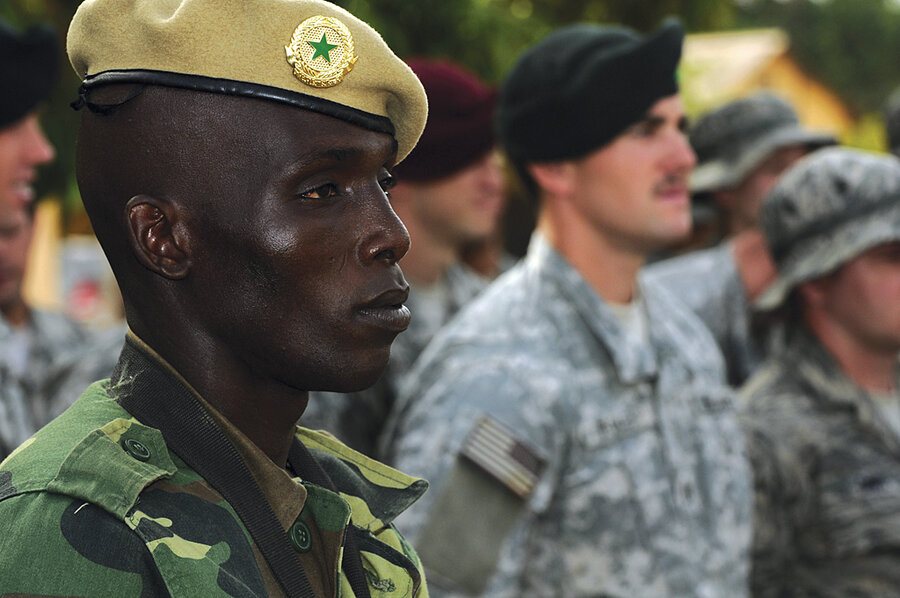US military in Africa faces uncertain year after Benghazi, sequestration
A version of this post first appeared on the author's blog, Lesley on Africa. The views expressed are the author's own.
As US Africa Command (AFRICOM) prepares to transition from the leadership of General Carter Ham to that of General David Rodriguez, it faces some critical decisions on how to develop a more robust posture to conduct crisis response operations while also bracing itself for the impact of sequestration.
This fundamental tension was apparent during General Ham’s testimony before the Senate Armed Services Committee (SASC) last week regarding the programs and budget needed to meet the command’s current and future requirements. (Watch an archived webcast of the hearing here and read General Ham’s prepared testimony.)
Here are some of the salient points:
At times, the testimony felt like another round of inquiry about what happened during the attack on the US consulate in Benghazi, and what assets were or could have been nearby to help save the lives of the four Americans that were killed. But I think the takeaway – not just from this hearing, but from the political fallout from the attack more generally – is that there is a clear demand for AFRICOM to have a more robust crisis response posture so that it is better able to protect US citizens and US interests on the continent. Accordingly, Ham highlighted several ways in which AFRICOM was building a theater response capability to improve the Command’s ability to respond to crises across North, East, and West Africa. These included:
•a rapid response Commander’s in-extremis force (CIF) based in Fort Carson, CO with has a rotational element forward deployed in Europe;
•a Special Purpose Marine Air Ground Task Force (SP-MAGTF) that would be specifically tailored for crisis response operations and presumably based in Europe; and
•an Army Regionally-Aligned Brigade based in Fort Riley, KS that could be activated for crisis response with the permission of the Secretary of Defense. (However, the day-to-day purpose of the regionally-aligned brigade would be to deploy in small teams across the continent to train African security forces.)
Of course, all the discussion of a more robust posture for crisis response operations begged the question of how the Department of Defense will be able to resource these requirements.
When asked how AFRICOM could increase response time while maintaining a relatively small footprint, Ham responded that we are much better at prevention than response. He further stated that prevention is much cheaper, but necessitates a better understanding of the operating environment – hence the preoccupation with increasing intelligence, surveillance, and reconnaissance (ISR) capabilities.
Earlier in the hearing, Ham had been asked about reductions in flight hours that have already resulted from sequestration, and have impacted the Command's ISR capabilities. In his response, he mentioned that most operations are funded by the services – Army, Navy, Air Force, Marines, and Special Operations – and that the Air Force and Navy components have had to constrain their flight operations due to funding challenges. General Ham further explained that he'd asked the Air Force commander to maintain the component's transport aircraft in a heightened alert posture so that they could move crisis response forces more readily. This, however, requires that the component sustain flight crews on a heightened alert posture, which cuts into normal training and sustainment flights. As a result, the component was having trouble funding both requirements. Similarly, the Navy has had to decrease the frequency of some of its operational reconnaissance flights – again because of the inability to fund its normal flight operations.
As the hearing suggested, the issue of how AFRICOM plans to improve readiness to respond to crises as we simultaneously enter sequestration means that the incoming commander, General Rodriguez, certainly has his work cut out for him.
Lesley Anne Warner blogs about African security and occasional travel tales at Lesley on Africa. Follow Lesley on Twitter @lesley_warner.





